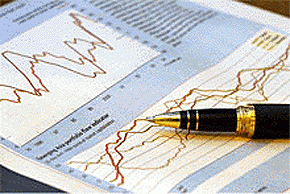
 By Roger J Kerr
By Roger J Kerr
Despite jawboning down by the RBNZ Governor, complaints from manufacturing exporters that the high NZ dollar is destroying jobs in the economy and a soggy looking Australian dollar, the Kiwi dollar has continued to strengthen against all and sundry over recent weeks.
The demand for the currency is related to investors and traders around the world still being very happy to buy the “growth/commodity” currency when global sharemarkets increase and risk appetite in the marketplace is positive because of that.
Greater than expected increases in jobs in the US economy though November, December and January and better than expected profit results on Wall Street over the last reporting season has spurred the Dow Jones Index above the 14,000 record high levels.
The NZD/USD rate traded to a high 0.8470 on Friday 1 February as the Dow gained another 150 points.
The Kiwi has encountered strong resistance previously from going above 0.8450 over recent months; it will now be a real test of the resolve of the traders and investors currently holding long NZ dollar position as to whether they are prepared to buy more Kiwi dollars at these elevated levels.
Last week’s RBNZ OCR review statement triggered additional NZD buying as (yet again!).
Governor Wheeler’s outlook on the local economy was more bullish or upbeat than what the market expected.
Such has been the pattern over the last three RBNZ monetary policy statements, the damage the high NZ dollar is doing to some parts of the export sector is highlighted, yet the statements send the Kiwi dollar upwards as the RBNZ (quite correctly) view the economy as stronger than what most bank economists and the financial markets believe.
Are the NZ dollar gains sustainable or has the Kiwi got ahead of itself in pushing sharply up to above 0.8100 against the Aussie dollar?
In many respects the lofty highs above 0.8400 against the USD could be making the NZ dollar more vulnerable to a sudden pull back if the AUD and Euro lose ground from current levels of $1.0400 and $1.3600 respectively against the USD.
The Kiwi dollar has appreciated against the AUD due to expectations of RBA interest rate cuts increasing and expectations of NZ interest rate rising later in 2103 increasing.
The interest rate differential has been pointing to a NZD/AUD cross-rate of 0.8200 for some weeks, we are now nearly there.
Looking ahead over coming months the direction of the Aussie dollar and the Euro against the USD (which the Kiwi dollar is highly correlated) will determine whether the Kiwi can hold above 0.8400 or return to the bottom end of its trading range at 0.8100.
The Australian dollar appears prone to declining from the current $1.0400 level for the following reasons:
• Despite higher iron ore prices and stronger Chinese economic data over recent weeks, the AUD failed to make gains as it normally would. There were no fresh AUD buyers despite the positive news for the currency.
• Global investors should continue to unwind AUD investments and positions now that the risk of European financial market blows up has substantially reduced. Capital flows that came into the safe and secure Aussie currency after the GFC in 2008/2009 are now reversing and will continue to do so.
• The RBA will not cut official interest rates this week, however they should confirm their easing bias and maybe cut in March.
• Australia’s terms of trade index (import and export prices) continues to decline and the domestic economy’s soft underbelly is starting to be exposed. Weaker Australian economic data over coming weeks will be cited as an excuse the sell the AUD.
The Euro’s recent gains to above $1.3600 leave the currency over-extended. The Euro buying related to European banks repaying loans dished out by the ECB for market liquidity last year. While the risk of another major meltdown in Europe’s financial/investment markets has certainly reduced, the underlying economies are still in deep recession.
Extensive monetary stimulus is needed in Europe to get consumers spending again and GDP growth returning to positive. Mario Draghi at the ECB has achieved his first objective of stabilising the markets; the next task is to assist economic recovery and to do that he needs to cut European interest rates.
The Euro should reverse sharply to below $1.3000 when the markets believe the ECB is more than likely to do just that.
A weaker Euro against the USD should also act to pull the NZD/USD rate back down.
------------------------------------------------------------------------------------------------------------------------------
To subscribe to our daily Currency Rate Sheet email, enter your email address here.
------------------------------------------------------------------------------------------------------------------------------
Roger J Kerr is a partner at PwC. He specialises in fixed interest securities and is a commentator on economics and markets. More commentary and useful information on fixed interest investing can be found at rogeradvice.com
No chart with that title exists.




We welcome your comments below. If you are not already registered, please register to comment.
Remember we welcome robust, respectful and insightful debate. We don't welcome abusive or defamatory comments and will de-register those repeatedly making such comments. Our current comment policy is here.